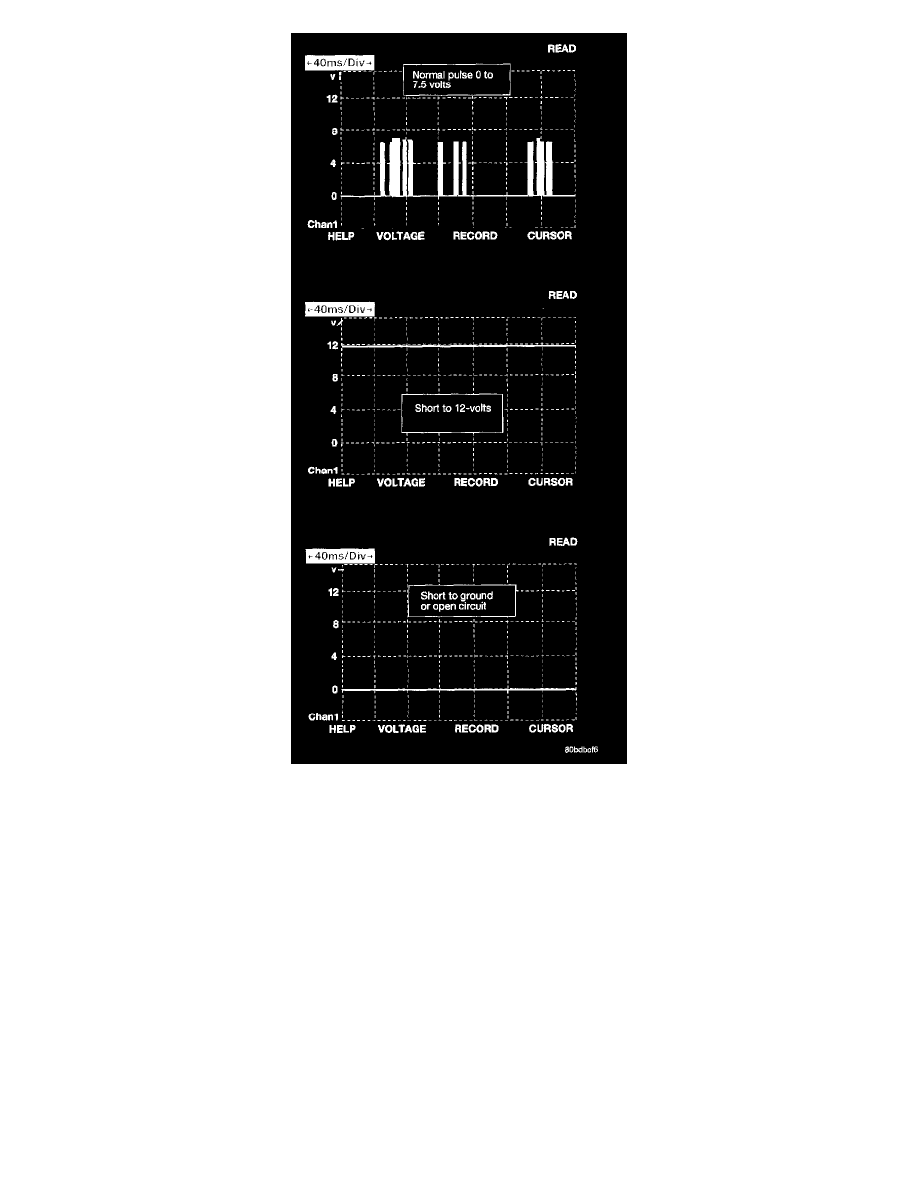Intrepid V6-2.7L VIN R (2003)

The bus messages are transmitted at a rate averaging 10800 bits per second. Since there is only voltage present when the modules transmit arid the
message length is only about 500 milliseconds, it is ineffective to try and measure the bus activity with a conventional voltmeter. The preferred
method is to use the DRBIII lab scope. The 12v square wave selection on the 20-volt scale provides a good view of the bus activity. Voltage on the
bus should pulse between zero and about 7 1/2 volts. Refer to the following figure for some typical displays.
The PCI Bus failure modes are broken down into two categories. Complete PCI Bus Communication Failure and individual module to response.
Causes of a complete PCI Bus Communication Failure include a short to ground or battery on the PCI circuit. Individual module no response can be
caused by an open circuit at the BCM or at the module, or an open battery or ground circuit to the affected module.
Symptoms of a complete PCI Bus Communication Failure would include but are not limited to:
-
All gauges on the EMIC stay at zero
-
All telltales on EMIC illuminate
-
EMIC backlighting at full intensity
-
No response received from any module on the PCI bus (except PCM)
-
No start (if equipped with Sentry Key Immobilizer)
Symptoms of Individual module failure could include any one or more of the above. The difference would be that at least one or more modules would
respond to the DRBIII.
Diagnosis starts with symptom identification. If a complete PCI Bus Communication Failure is suspected, begin by identifying which modules the
vehicle is equipped with and then attempt to get a response from the modules with the DRBIII. If any modules are responding, the failure is not related
